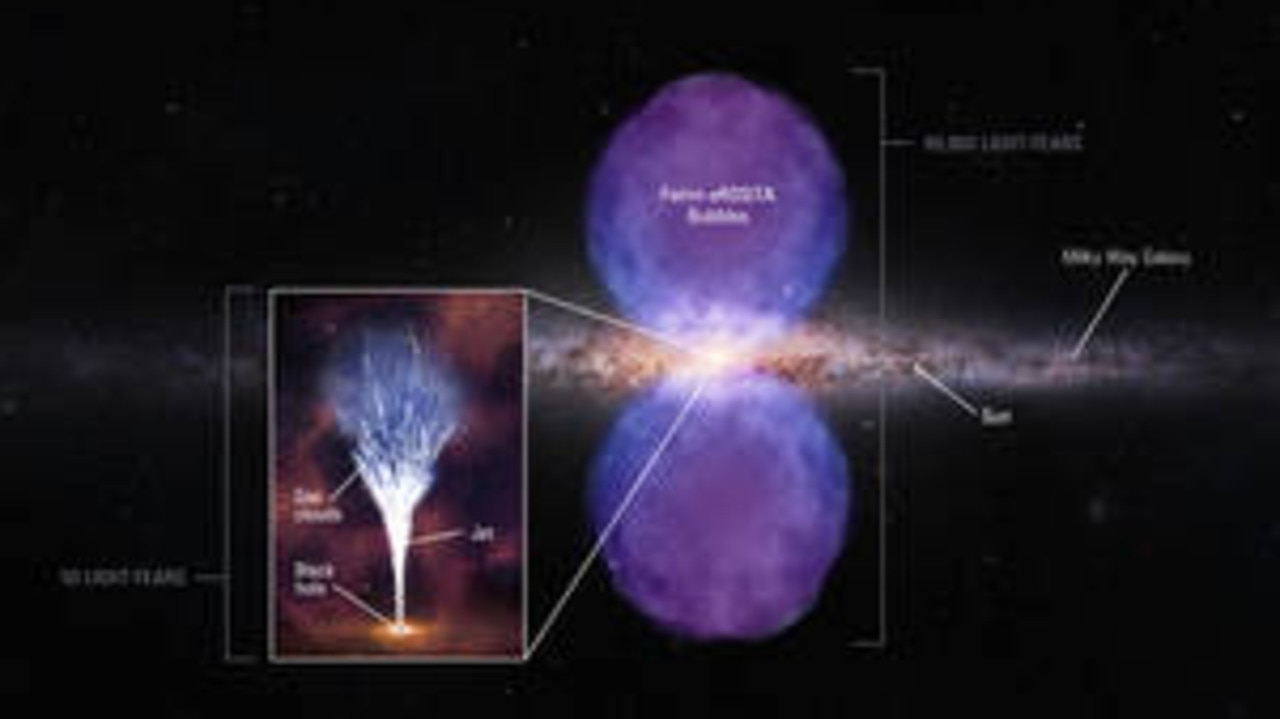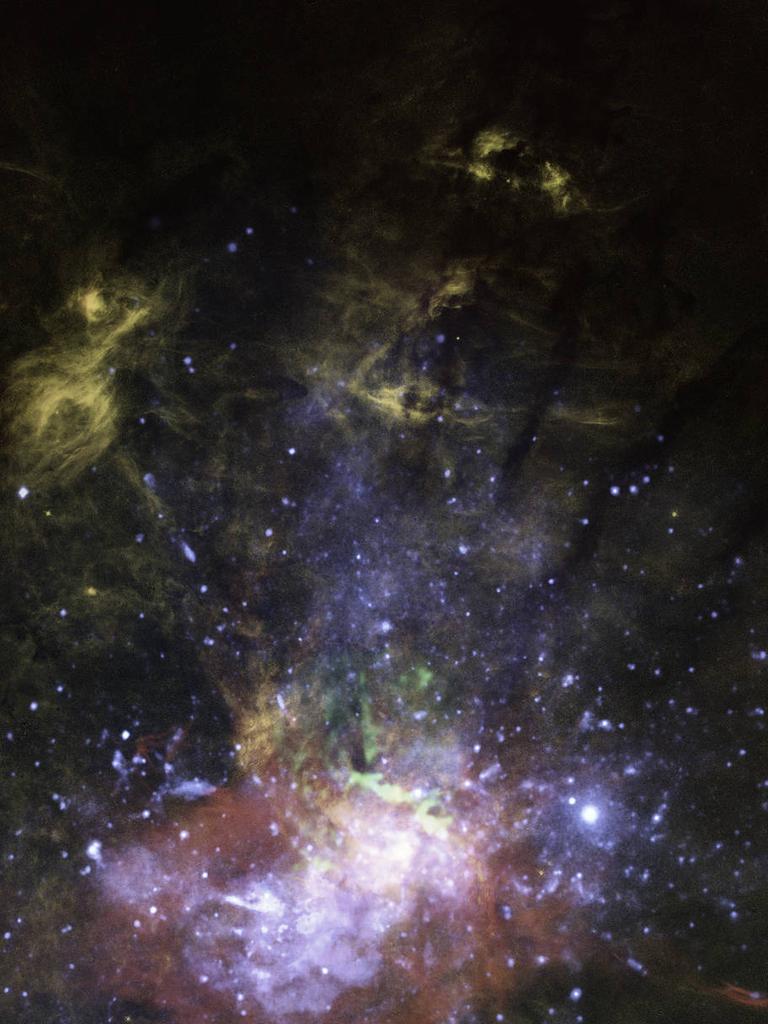A monster black hole has spurted out a ‘blowtorch-like jet’
The Milky Way’s supermassive black hole has shown scientists it is not a “sleeping monster” by spurting out a blowtorch like jet.

The Milky Way’s supermassive black hole has had a leak and spurted out a “blowtorch-like jet” into space.
NASA scientists made the discovery of the event which happens about every thousand of years. They believe it occurs after the black hole swallows something large – like a gas cloud – before spurting out a jet.
Sagittarius A* is at the galactic centre of our Milky Way and has a mass that’s 4.1 million times that of our Sun.

The new research was led by Professor Gerald Cecil of the University of North Carolina at Chapel Hill, who pieced together multiwavelength observations from a variety of telescopes “like a jigsaw puzzle”.
Data was mostly taken from two of NASA’s telescopes – Hubble and Chandra – however the jet of gas was not captured.
“Astronomers using the Hubble Space Telescope have captured a glowing cloud of hydrogen near the black hole,” NASA said in a statement.
“The interpretation is that the cloud is being hit by a narrow, columnated jet of material that was blasted out of the black hole merely 2000 years ago.
“This is further evidence that the black hole, with a mass of 4.1 million Suns, is not a sleeping monster but periodically hiccups as stars and gas clouds fall into it.”
As the jet blows through the hydrogen gas, it hits cosmic materials which creates a series of expanding bubbles that extend out.


These streams then continue out of the Milky Way’s gas disk and into the galactic halo.
It comes as Earth’s closest black holes are on a collision course and will likely form a supermassive black hole with researchers salivating at the prospect.
Fortunately for life on Earth, the two regions of space are 89 million light-years away.
Despite the huge distance, they are still the closest black holes to Earth and this closeness indicates that they are moving towards each other and will collide and merge – forming a supermassive black hole.
The previous closest supermassive black hole pairing is found 470 million light-years from Earth.





